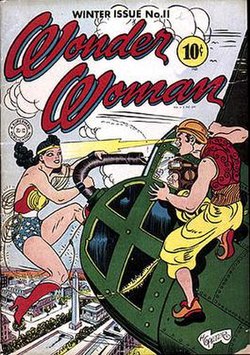| Hypnota | |
|---|---|
 Hypnota/Hypnotic Woman in Suicide Squad (volume 7) #4, June 2021; illustration by Eduardo Pansica, inks by Julio Ferreira and colors by Marcelo Maiolo. | |
| Publication information | |
| Publisher | DC Comics |
| First appearance | Wonder Woman #11 (Winter 1944) |
| Created by | William Moulton Marston Harry G. Peter |
| In-story information | |
| Species | Human |
| Team affiliations | Villainy Inc. |
| Notable aliases | Hypnota the Great The Hypnotic Woman |
| Abilities | Mind control via hypnosis |
Hypnota (also sometimes Hypnotic Woman) is a fictional character appearing in DC Comics publications and related media, commonly as a recurring adversary of the superhero Wonder Woman. Created by writer William Moulton Marston and artist Harry G. Peter, the character debuted in 1944 in Wonder Woman #11 as a stage magician and human trafficker with powerful superhuman mind-control abilities. The gender presentation of her stage persona, Hypnota the Great, was that of an ostensibly male figure in Orientalized Middle-Eastern costume, complete with a false mustache and goatee. Though initially disguising her gender to deflect criminal suspicion (a genderplay trope Marston incorporated into several other foes he created to battle Wonder Woman, [1] including Doctor Poison and the Blue Snowman), Hypnota made subsequent Golden Age appearances in her masculine stage garb; even after her supposedly "true" gender identity was revealed, she chose to present as a man – a move that might be understood in the 21st century as genderqueer. The Modern Age Hypnota has abandoned her false facial hair and is now depicted as a cisgender woman, albeit one who wears a masculine costume similar to her Golden Age look.
